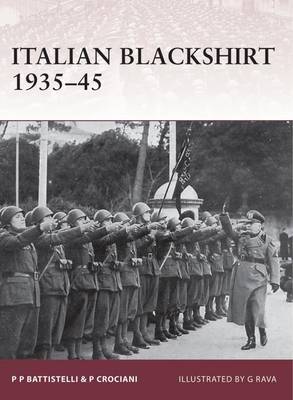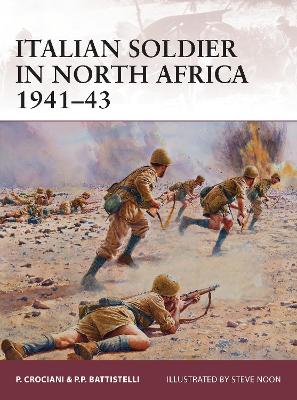Warrior
3 primary works
Book 1
This book explores the experiences of the German Afrika Korps soldier during the North Africa campaign, from the Korps' arrival in-theatre in February 1941 to its eventual surrender in Tunisia in May 1943, with a particular focus on the intense period of warfare in the Western Desert between 1941 and 1942. Under the leadership of one of the war's most famous commanders, Erwin Rommel, the Afrika Korps grew to include a broad range of armour, infantry, artillery, anti-tank, engineer, communications, supply, medical and service elements. The soldiers of the Afrika Korps considered themselves as part of an elite, a highly select group that had no equal, not only in the German Army, but in the rest of the world.
Book 144
This book documents the experiences of the Italian armed Fascist militia, the Camicie Nere (Blackshirts), from the Italian-Ethiopian war of 1935-36, through the Spanish Civil War to the end of World War II. It explores their origins, development, recruitment, training, conditions of service, uniforms and equipment, battle experience, political and ideological motivation. The Blackshirt legions were raised under army control from 1928, and were employed in 1933 in Libya in counterinsurgency operations against the Senussi tribes; from 1935 in Italy's war against Ethiopia; and, during the Spanish Civil War. Following the outbreak of World War II, the Blackshirts fought in North Africa, Greece, Croatia, on the Eastern Front and finally in Italy itself following the Allied invasion.
Book 169
Italian soldier in North Africa 1941-43
by Piero Crociani and Pier Paolo Battistelli
Published 1 January 2013
Despite the attention paid to the Afrikakorps over the years, it was the numerically far superior forces of the Italian Army that held the line and formed the bulk of the fighting power available to the Axis powers during the War in the Desert from 1941 through to 1943. Their performance has been unfairly criticised over the years - the best units of the Italian Army were equal to those of the British and Germans - but they suffered from a lack of mobility and poor equipment that made it impossible for them to meet mobile British forces on anywhere near equal terms. Despite this, the Italian Army went through many changes through the period, with the introduction of a variety of elite units - armoured, mechanised and parachute divisions that did much to restore the fighting reputation of the Italian soldier in the desert war. Their German allies belatedly acknowledged this with the redesignation of Panzerarmee Afrika as 1st Italian Army in February 1943. This title details recruitment, organisation and experience of the Italian forces in this theatre, casting new light on a force whose fighting power and capabilities have been unfairly ignored and maligned for too long.


